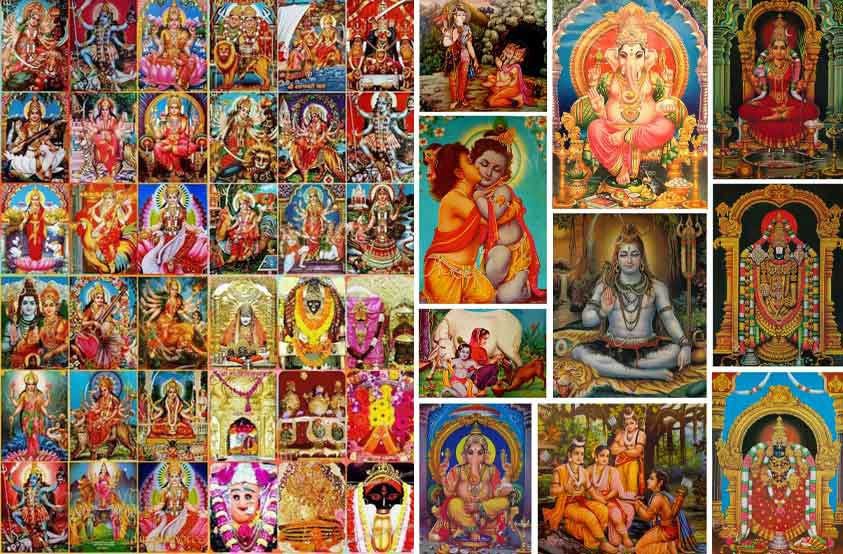Hinduism, one of the oldest religions in the world, offers an intricate tapestry of philosophical and spiritual concepts that guide the lives of millions worldwide. Central to Hinduism are the concepts of Dharma (righteous duty) and Karma (action and its consequences), along with the ultimate goal of Moksha (liberation). These concepts guide Hindus through their spiritual journey, which is further deepened by the practice of various paths of Yoga. In this episode, we delve into these profound concepts, the transformative power of Hindu spirituality, the significance of temples and rituals, and the moral lessons from Hindu epics.
Understanding the concepts of Dharma and Karma
Dharma, in Hinduism, refers to the moral and ethical duties that individuals must follow to live a righteous life1. It can be influenced by various factors such as caste, occupation, gender, and age. Dharma forms the moral law that governs each individual and ensures the smooth functioning of society and the universe. On the other hand, Karma refers to action and its consequences2. It denotes that every action has a consequence, which may manifest in the current or future lifetimes. The concept of Karma encourages individuals to perform their duties responsibly, as each action can shape one’s destiny.
Explanation of Moksha – the ultimate goal in Hinduism
Moksha, or liberation, represents the ultimate goal in Hinduism3. It refers to the liberation from the cycle of birth, death, and rebirth, known as Samsara. Achieving Moksha means attaining a state of eternal bliss and union with the divine, where the individual soul (Atman) merges with the universal soul (Brahman). Moksha can be attained by realizing one’s true nature, which is divine, eternal, and beyond the physical realm. This realization often requires a deep understanding of the self and the universe, guided by the principles of Dharma and Karma.
Introduction to the paths of Yoga (Bhakti, Jnana, Karma, and Raja)
In Hindu philosophy, Yoga is considered a path to attaining Moksha4. There are primarily four types of Yoga: Bhakti (path of devotion), Jnana (path of knowledge), Karma (path of selfless action), and Raja (path of meditation). Bhakti Yoga involves expressing devotion towards a personal deity, while Jnana Yoga involves gaining spiritual knowledge and insight. Karma Yoga encourages performing one’s duties selflessly without attachment to the results, and Raja Yoga (also known as Ashtanga Yoga) involves practices like meditation and moral conduct to attain self-realization. Each path offers different methods for individuals to realize their divine nature.
Role of prayer and meditation in Hinduism
Prayer and meditation are integral to Hindu spirituality5. Prayers, often directed towards deities, are a way to express devotion, seek blessings, and communicate one’s aspirations. They can be performed in temples, homes, or any place considered sacred. Meditation, on the other hand, is a practice of concentrating the mind to attain inner peace and realization of the divine self. It forms a crucial part of Raja Yoga. Meditation can take many forms, including mantra meditation, mindfulness, and transcendental meditation, each with its unique methods and benefits.
The transformative power of Hindu spirituality
Hindu spirituality, with its profound concepts and practices, can bring about significant transformation in individuals6. Through the principles of Dharma and Karma, individuals learn to lead a righteous and responsible life. The paths of Yoga provide methods for self-realization, fostering spiritual growth. Prayer and meditation can help in developing focus, peace, and a sense of connection with the divine. Additionally, the goal of Moksha gives a higher purpose to life, inspiring individuals to seek truth and liberation.
Significance of temples and rituals in Hinduism
Temples and rituals hold a significant place in Hinduism7. Temples are seen as the abode of gods and are places for communal worship, meditation, and religious instruction. They are often vibrant with rituals, festivals, and music. Rituals, whether performed in temples or homes, form an essential part of Hindu worship. They include rites like puja (worship), aarti (light ceremony), and homa (fire sacrifice). These rituals are a way to express devotion, purify the mind, and connect with the divine.
Discussion on Hindu epics and their moral lessons
Hindu epics, primarily the Mahabharata and the Ramayana, offer rich narratives filled with moral and spiritual lessons8. These epic tales are more than just stories; they provide valuable insights into Dharma, duty, righteousness, and the complexities of life. The characters in these epics often face moral dilemmas, and their actions and decisions offer lessons for dealing with our own life’s challenges. Through these stories, readers can gain a deeper understanding of the principles of Hindu philosophy and spirituality.
Conclusion
The concepts of Dharma, Karma, Moksha, and Yoga form the spiritual backbone of Hinduism, offering guidance for leading a meaningful and righteous life. The practices of prayer, meditation, rituals, and the wisdom of Hindu epics further enrich the Hindu spiritual journey. While the journey is personal and unique for each individual, the ultimate destination remains the same – the realization of the divine self and the attainment of Moksha, liberation from the cycle of life and death. Hindu spirituality, thus, offers a transformative path that guides one towards inner peace, self-realization, and union with the divine.
References
Footnotes
- The Chopra Center. (2021). What Is Dharma? Retrieved from https://chopra.com/articles/what-is-dharma ↩
- BBC. (2014). Hindu concepts. Retrieved from https://www.bbc.co.uk/bitesize/guides/z463gk7/revision/3 ↩
- Internet Encyclopedia of Philosophy. (2014). Moksha (Hinduism). Retrieved from https://iep.utm.edu/moksha/ ↩
- The Yoga Institute. (2020). Four Paths of Yoga. Retrieved from https://theyogainstitute.org/four-paths-of-yoga/ ↩
- Chopra, D. (2021). The Role of Prayer and Meditation in Hinduism. Retrieved from https://chopra.com/articles/the-role-of-prayer-and-meditation-in-hinduism ↩
- The Times of India. (2017). Transformative power of Hindu spirituality. Retrieved from https://timesofindia.indiatimes.com/blogs/the-speaking-tree/transformative-power-of-hindu-spirituality/ ↩
- Britannica. (2021). Hinduism – Rituals, worship, and festivals. Retrieved from https://www.britannica.com/topic/Hinduism/Rituals-worship-and-religious-practices ↩
- BBC. (2009). The Epics – the Mahabharata and Ramayana. Retrieved from https://www.bbc.co.uk/religion/religions/hinduism/texts/epics.shtml ↩
